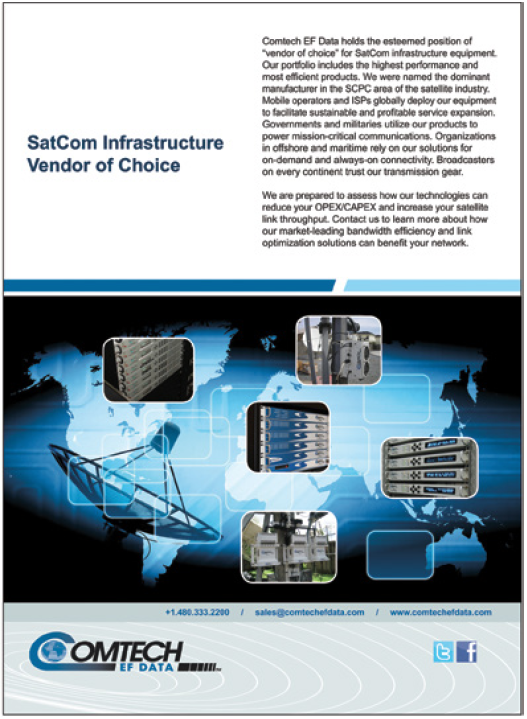If anything has been amplified to a painful level this year, it is the consequence of political dysfunction, and how the failures to govern by Congress, the Administration and both political parties have negatively affected the United States, both at home and abroad. No sector of society has been spared the impact of this colossal failure of the two-party system, and certainly we’ve felt it in the space community—both in the U.S. and more broadly around the world.
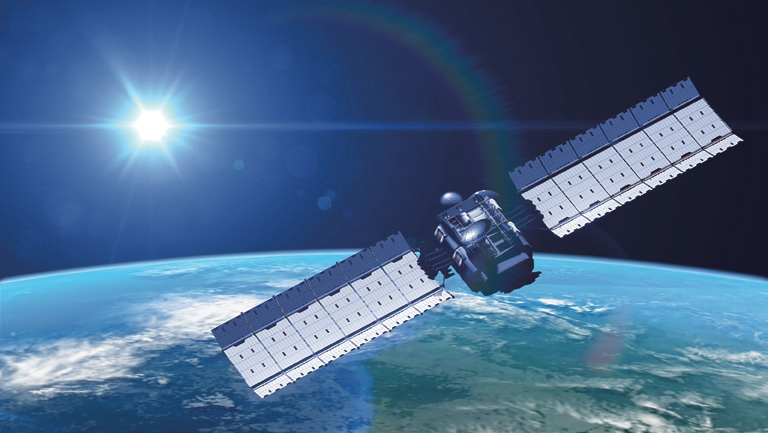
However, at the end of the day, and at the end of every calendar year, I like to think of myself as a “glass half full” kind of guy. For my final article of 2013, I’d like to forget, for a moment, about the lack of a clear mandate or political consensus for NASA.
I’m going to park, at the door, my frustrations over the way that ITAR reforms still aren’t over the finish line. I’m going to forget, for a moment, the damage that is going to be inflicted upon national defense readiness and the global space industrial base if a second round of sequestration is allowed to kick in.
Instead, I’d like to reflect on the many amazing things that have been accomplished by the global space community in 2013, despite the challenges we have faced.
Looking back on 2013, I’m struck by how diverse our industry has become, and how, despite that diversity, we are united by our common commitment to innovation, our mutual pursuit of technical excellence and a fundamental desire to improve human knowledge and make the world a better place.
It’s hard to know where to start in making a list of all we’ve accomplished in 2013. So I’ve kept it simple, gone back through the calendar and tried to just jot down the most obvious and newsworthy accomplishments of our Space Foundation corporate member companies and strategic partner organizations.
This is dangerous. For brevity’s sake, I’ve omitted more than I’ve included. I apologize in advance if I’ve missed something and invite you to email to me any other accomplishments that should have made this list; if I hear back from enough of you, an additional list of your favorite 2013 moments in the January 2014 edition of the Space Foundation’s Space Watch newsletter will be published.
With those caveats in mind, here’s my list of the accomplishments we saw in the year gone by that make the global space industry the most amazing industry in the world:
January 27: The IGS radar satellite 4, and IGS optical satellite 5V are successfully launched, by Mitsubishi Heavy Industries, on an H-IIA rocket, from the Tanegashima launch complex.
January 30: The TDRS-K satellite is successfully launched, by United Launch Alliance, on an Atlas V-401 rocket, from Cape Canaveral.
February 6: Six Globalstar second-generation satellites are successfully launched, by Arianespace, on a commercial Soyuz rocket, from
Kourou spaceport.
February 7: The Amazonas 3 and Azerspace/Africasat-1a satellites are successfully launched, by Arianespace, on an Ariane 5-ECA rocket, from Kourou spaceport.
February 11: The Landsat Data Continuity mission is successfully launched, by United Launch Alliance, for NASA, on an Atlas V-401 rocket, from Vandenberg AFB.
February 27: Inspiration Mars Foundation, led by Dennis Tito—the world’s first private, commercial astronaut—announced plans to work toward launching a man and woman on a round trip to Mars in 2018.
March 1: A Falcon 9 rocket and Dragon spacecraft are successfully launched, by SpaceX, on a NASA Commercial Resupply Services mission to the International Space Station, from Kennedy Space Center. It is the fifth successful Falcon 9 launch, and the second official cargo resupply mission to the ISS for SpaceX.
March 19: SBIRS GEO-2 is successfully launched, by United Launch Alliance, for the U.S. Air Force, on an Atlas V-401 rocket, from
Cape Canaveral.
April 5: The James Webb Telescope wings arrive for testing at Marshall Space Flight Center.
April 21: First launch of the Antares rocket. Orbital Sciences Corporation successfully conducts the first launch of its Antares rocket from Pad-OA of the Mid-Atlantic Regional Spaceport.
April 29: Virgin Galactic’s SpaceShipTwo successfully completes its first powered flight test, reaching 55,000 feet on thrust provided by a Sierra Nevada Corporation hybrid rocket engine, from the Mojave spaceport.
May 7: The Proba-V, VNREDSat-1 and ESTCube-1 satellites
are successfully launched, by Arianespace, on a Vega rocket, from
Kourou spaceport.
May 15: GPS IIF-4 is successfully launched, for the U.S. Air Force, by United Launch Alliance, on an Atlas 5-401 rocket, from Cape Canaveral.
May 24: WGS-5 is successfully launched, for the U.S. Air Force, by United Launch Alliance, on a Delta IV-362 rocket, from Cape Canaveral.
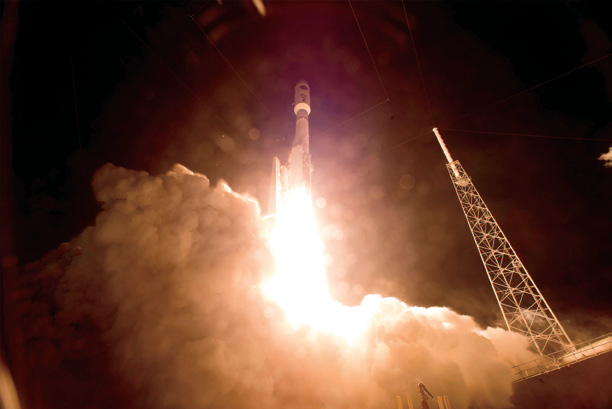
The launch of the AEHF-3 satellite via a United Launch Alliance Atlas V 531. Photo courtesy of ULA.
May 28: International Space Station Expedition 37 is successfully launched, by Roskosmos, on a Soyuz-FG rocket, from the Baikonur Cosmodrome. (Crew: Fyodor Yurchikhin, Karen Nyberg, Luca Parmitano)
June 5: The Automated Transfer Vehicle “Albert Einstein” is successfully launched, to the International Space Station, by Arianespace, for ESA, on an Ariane 5-ES rocket, from the Kourou spaceport.
June 11: Shenzhou 10, China’s second manned spaceflight to the Taingong-1 space lab is successfully launched, by the China Manned Spaceflight Agency, on a Long March 2F rocket, from the Jiuquan space launch complex. (Crew: Nie Haishen, Zhang Xiaoguang, Wang Yaping)
June 14: The Grasshopper experimental rocket makes its highest launch-and-land flight to date, in a SpaceX test flight, from McGregor, Texas. Also on June 14: NASA successfully tests the J2-X rocket engine, an important part of the Space Launch System, at test stand A-1 at Stennis Space Center.
June 25: Four O3b network satellites are successfully launched, by Arianespace, on a commercial Soyuz rocket, from the Kourou spaceport.
June 28: The Stargazer solar astronomy telescope is successfully launched, by Orbital Sciences, for NASA, on a Pegasus-XL launch vehicle.
July 19: MUOS-2 is successfully launched, for the U.S. Navy, by United Launch Alliance, on an Atlas 5, from Cape Canaveral.
July 25: The Alphasat and INSAT-3D satellites are successfully launched, by Arianespace, on an Ariane 5-ECA rocket, from the Kourou spaceport.
August 3: The HTV-4 logistics module is successfully launched, to the International Space Station, on an H-IIB 304 rocket, by Mitsubishi Heavy Industries, from the Tanegashima launch complex.
August 7: WGS-6 is successfully launched, for the U.S. Air Force by United Launch Alliance, from Cape Canaveral, on a Delta IV rocket.
August 19: NASA astronauts successfully demonstrate the communications, ergonomics and crew-interface technologies of the Boeing CTS-100 commercial crew capsule.
August 22: Sierra Nevada Corp.’s DreamChaser test spacecraft successfully completes captive-carry testing at NASA’s Dryden Flight Research Center.
August 28: NASA’s 2013 astronaut candidate class begins wilderness training as the first phase of their extensive training program that will lead to becoming full-fledged astronauts. Also on August 28: The NROL-65 satellite is successfully launched, by United Launch Alliance on a Delta IV Heavy rocket from Vandenberg AFB.
August 29: The Eutelsat 25B and GSAT-7 satellites are successfully launched, by Arianespace, on an Ariane 5-ECA rocket, from Kourou spaceport.
September 5: Virgin Galactic’s SpaceShipTwo successfully completes another key powered flight test, reaching 69,000 feet on thrust provided by a Sierra Nevada Corp hybrid rocket engine, from the Mojave spaceport.
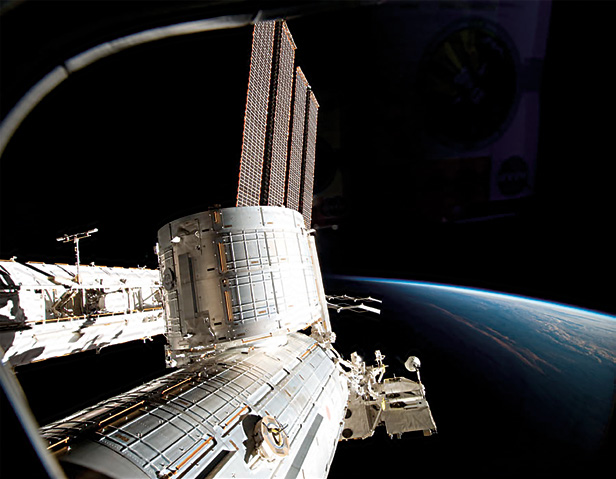
September 6: The lunar exploration orbiter LADEE was successfully
launched, for NASA, by Orbital Sciences Corporation, on a Minotaur V rocket on its maiden flight, from the Mid-Atlantic Regional Spaceport.
September 14: The Hisaki space telescope was successfully launched, by JAXA, on an Epsilon rocket making its maiden flight, from the Uchinoura spaceport.
September 18: AEHF-3 launched. United Launch Alliance marks a major milestone with its 75th consecutive successful launch as an Atlas 5-531 orbits the AEHF-3 satellite for the U.S. Air Force. Also September 18: The Cygnus 1 logistics module is successfully launched, to the International Space Station, its maiden flight, by Orbital Sciences Corporation, on an Antares 110 rocket, from the Mid-Atlantic Regional Spaceport.
September 20: Northrop Grumman announces that the manufacturing of all template layers for NASA’s James Webb Space Telescope sunshield is complete.
September 25: A Soyuz capsule is successfully launched, to the International Space Station, carrying Expedition 38 crew, by Roskosmos, on a Soyuz-FG rocket, from the Baikonur Cosmodrome. (Crew: Oleg Kotov, Sergey Ryazansky, Michael Hopkins)
September 29: An upgraded Falcon 9 rocket is successfully test-launched, by SpaceX, from Vandenberg AFB. On board is the Cassiope spacecraft, launched for MDA of Canada.
October 26: The DreamChaser spacecraft test flight vehicle makes its first free flight tests at Edwards AFB. Built by Sierra Nevada Corporation as part of the NASA commercial crew initiative, the test spacecraft meets all in-flight test objectives, but suffers minor damage when a landing gear fails to deploy properly on landing.
October 28: NASA’s first-ever deep space craft, Orion, being built by Lockheed Martin, powered on for the first time, marking a major milestone in the final year of preparations for flight.
November 5: The Mars Orbiter Mission is successfully launched, by the Indian Space Research Organization, on a PSLV-XL rocket, from the Satish Dhawan space launch facility—marking India’s first interplanetary space exploration mission.
November 7: A Soyuz capsule is successfully launched, to the International Space Station, carrying Expedition 39 crew, by Roskosmos, on a Soyuz-FG rocket, from Baikonur Cosmodrome. The crew carries a replica of the Olympic Torch, highlighting the 2014 Winter Olympics to be held in Sochi, Russia. (Crew: Koichi Wakata, Richard Mastracchio, Mikhail Tyurin)
November 18: A United Launch Alliance Atlas 5 rocket flawlessly launches the NASA MAVEN spacecraft toward an orbital rendezvous with Mars. Once there, MAVEN will study the Martian atmosphere in hopes of understanding what happened to water and water vapor on the Red Planet.
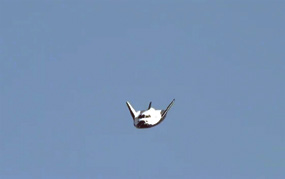
A photo from the following helicopter of the Dream Chaser spaceplane starting its glide to the runway at Edwards Air Force Base, California, during first free flight landing test on October 26, 2013. Photo courtesy of Sierra Nevada Corporation.
November 19: The U.S. Air Force Test Program Satellite 3 and 28 cubesats on an integrated payload stack were successfully launched, by Orbital Sciences Corporation, on a Minotaur I rocket, from the Mid-Atlantic Regional Spaceport, for the Air Force Operationally Responsive Space organization, the Air Force Space and Missile Systems Center Space Test Program, and the NASA Educational Launch of Nanosatellites program.
November 20: The International Space Station celebrates 15 years
in space.
November 21: Breaking the record set just the day before, for number of satellites launched atop a single launch vehicle, a Dnepr rocket lofted from the Dombarovsky missile base near Yasny, Russia, orbited 29 tiny Cubesat spacecraft. Moscow-based Kosmotras, a joint Russian-Ukrainian commercial space company, orbited the satellites for a diverse range of customers from Dubai, South Korea, the United Arab Emirates, the U.S., Italy and Peru.
Of course, these are just the easy-to-pinpoint highlights, and, as noted above, I’ve just focused on Space Foundation partner organizations. Even at that, I’ve just skimmed the surface.
Let’s not forget that the Curiosity Rover has been trundling all over Mars for all of 2013, poking, prodding, drilling and analyzing the red planet. We’ve had stunning announcements on the discovery of as many as 10 to 20 billion Earth-like planets in our Milky Way Galaxy.
China, Japan and Russia launched dozens of commercial and scientific satellites in 2013. Science on the ISS continues unabated. Terrestrial applications for space-derived data continue to explode. The commercial space sector, especially satellite products and services and attendant infrastructure, continues to build momentum like some massive wave.
The astronomy community is also quietly surging ahead, with major developments in 2013 for the Advanced Technology Solar Telescope project (Haleakala), the European Extremely Large Telescope (Cerro Armazones) and the Thirty Meter Telescope (Maua Kea).
This is not to say that the industry has been without its challenges and failures in 2013. Anyone in this business can tell you that it remains a complex, difficult, unforgiving and continuously challenging way to make a living:
A Rokot/Briz launch January 15 from the Plesetsk spaceport suffered the loss of one of three communications satellites that were being launched.
On February 1, a Sea Launch LLC attempt suffered a failure just seconds into its mission from the Odyssey platform, putting Intelsat 27 into a subsurface orbit of the Pacific Ocean.

A Roskosmos launch failure, featuring a Proton-M flying out of the Baikonur Cosmodrome, resulted in the loss of three navigation satellites.
Nor was it a good year for suborbital launches, with a half-dozen small rocket failures from various launch sites around the planet.
By our very nature, most of the people in the space community are problem solvers. We will do the analyses, do the math and figure out how to get something done—no matter how difficult it is to do. And so, we spend a lot of our time fixated on our problems and challenges, and probably not enough of our time in celebrating our accomplishments and success.
The View From Here is that, despite the extremely challenging environment that we confront, our accomplishments continue to far outweigh our disappointments—and ours is still the most amazing industry in the world.
Wishing you happy holidays, and a fantastically successful and prosperous 2014.
For further information regarding Space Foundation, their website is: http://www.spacefoundation.org/
Editor’s note: Our thanks to Elliot and Space Foundation for allowing MilsatMagazine to republish his “View From Here” from the organization’s Space Watch newsletter, December 2013 edition.
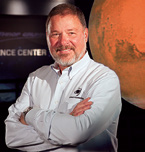
About the author
Named chief executive officer of the Space Foundation in 2001, Elliot Pulham leads a premier team of space and education professionals providing services to educators and students, government officials, news media and the space industry around the world. He is widely quoted by national, international and trade media in their coverage of space activities and space-related issues. Before joining the Space Foundation, he was senior manager of public relations, employee communication and advertising for all space programs of Boeing, serving as spokesperson at the Kennedy Space Center for the Magellan, Galileo and Ulysses interplanetary missions, among others. He is a recipient of the coveted Silver Anvil Award from the Public Relations Society of America—the profession’s highest honor. In 2003, the Rotary National Awards for Space Achievement Foundation presented him with the coveted Space Communicator Award, an honor he shares with the late legendary CBS News Anchor Walter Cronkite and former CNN News Anchor Miles O’Brien. Pulham is chairman of the Hawaii Aerospace Advisory Committee, a former Air Force Civic Leader and advisor to the Chief of Staff and Secretary of the Air Force and a recipient of the U.S. Air Force Distinguished Public Service Medal. He serves on the editorial board of New Space Journal.



